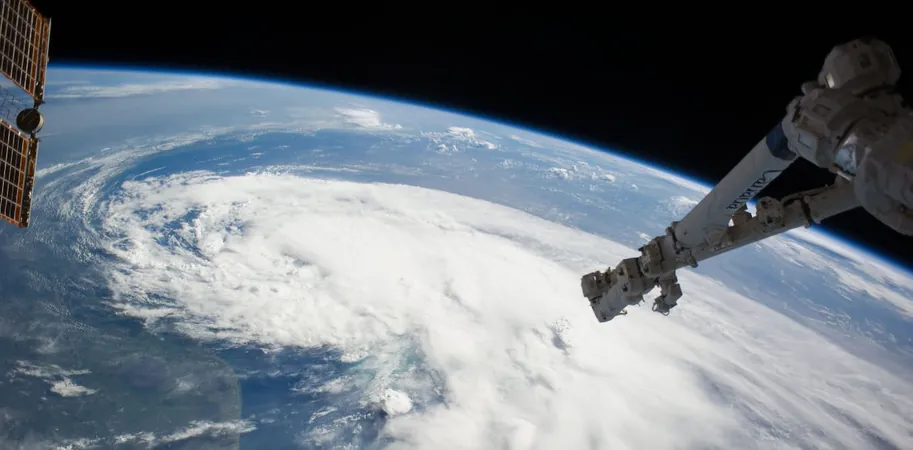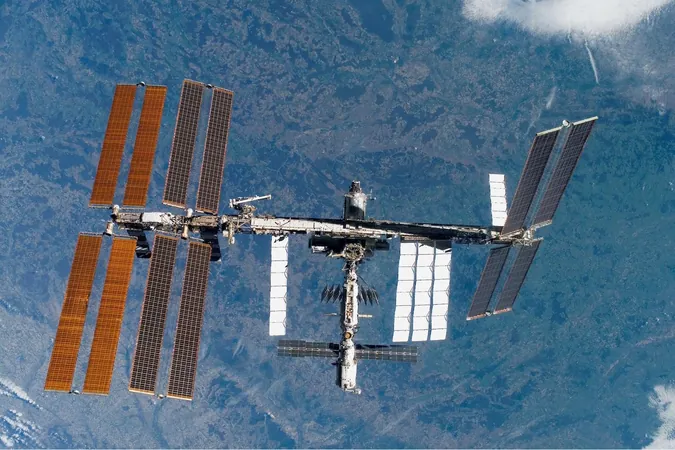
Why Does the Earth Seem Flat When It's Really Round? The Science Behind Our Perception!
2024-11-11
Author: Benjamin
Curiosity Sparks Amazing Questions!
Curiosity sparks amazing questions, especially for young minds! One intriguing query from Zayden, an 11-year-old from Corona, California, asks why everything appears flat, even though we know the Earth is round. Let’s dive into the science of perception!
The Role of Perspective
Since ancient times, thinkers like the Greeks recognized that the Earth is spherical, as evidenced by observations of celestial bodies like the Moon and stars. Today, we have stunning images from astronauts and satellites that showcase our beautiful blue planet from space. But when we're standing in a park or looking out the window, why does the Earth look flat?
The key here is perspective. Imagine you're a small child or even a tiny insect, standing on a gigantic sphere. For example, if you were an acrobat balancing on a 3-foot-wide circus ball, you might see it curving away beneath you. However, for a little fly perched just a millimeter off the surface, the view would be largely flat due to its proximity to the surface of the ball.
Now consider this: the Earth is about 42 million feet wide! Even if you're a tall adult standing 6 feet above the ground, that height is insignificant compared to the vastness of the planet. No matter how high you climb—whether it's a hill or even Mount Everest, which towers at 29,035 feet—your eyes won't capture enough of Earth's curvature to register its roundness.
To actually witness the curve of our planet, you'd need to ascend over 6 miles (10 kilometers) above the surface—a height achieved by space travelers. From this vantage point, you can see a significant stretch of the horizon, allowing the curvature to be visible, much like the tiny fly would see the ball if it were soaring high up into the sky.
Interestingly, commercial airliners fly at altitudes where passengers can sometimes catch a glimpse of this curve, though pilots enjoy a better view from the cockpit compared to those looking out from the sides of the plane.
More Than Just a Sphere!
Interestingly enough, the Earth is not a perfect sphere. It's a slightly squished shape called an oblate spheroid, which means it’s marginally wider at the equator than from pole to pole. This peculiar shape arises from the Earth's rotation, which creates a centrifugal force akin to what you’d feel if you were on a spinning merry-go-round.
Additionally, the Earth's surface has varied topographic features—mountains, valleys, and ocean trenches—that cause minor variations in gravity and further affect our planet's shape.
The study of Earth's shape and size falls under the field of geodesy, a crucial branch of Earth science. Geodesy plays a role in everything from construction and infrastructural projects to accurate mapping of sea level changes and the navigation of satellites.
So, the next time you glance out at the horizon and see a flat landscape, remember—it’s all about our perspective on this endlessly fascinating, slightly squished, and extraordinarily magnificent planet we inhabit!
Curiosity Knows No Bounds!
Do you, too, have a burning question about the world? Feel free to explore and discover—after all, curiosity knows no bounds!









 Brasil (PT)
Brasil (PT)
 Canada (EN)
Canada (EN)
 Chile (ES)
Chile (ES)
 España (ES)
España (ES)
 France (FR)
France (FR)
 Hong Kong (EN)
Hong Kong (EN)
 Italia (IT)
Italia (IT)
 日本 (JA)
日本 (JA)
 Magyarország (HU)
Magyarország (HU)
 Norge (NO)
Norge (NO)
 Polska (PL)
Polska (PL)
 Schweiz (DE)
Schweiz (DE)
 Singapore (EN)
Singapore (EN)
 Sverige (SV)
Sverige (SV)
 Suomi (FI)
Suomi (FI)
 Türkiye (TR)
Türkiye (TR)